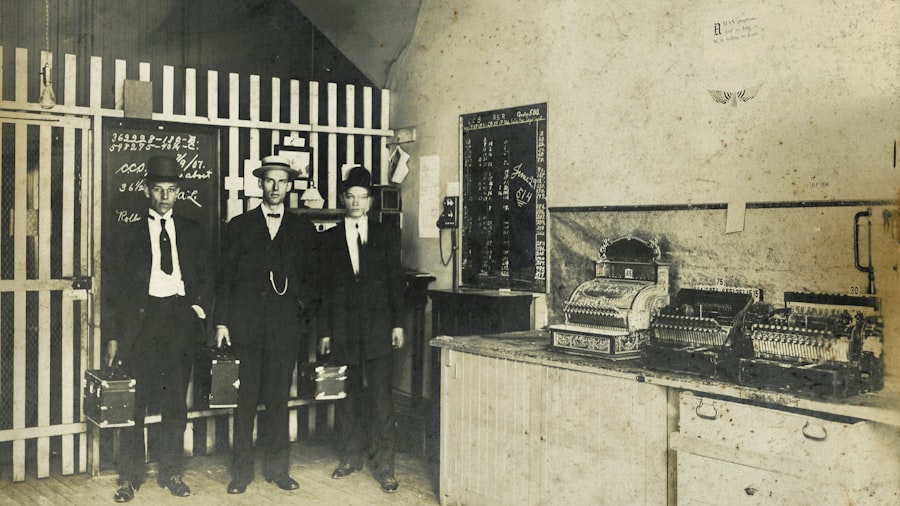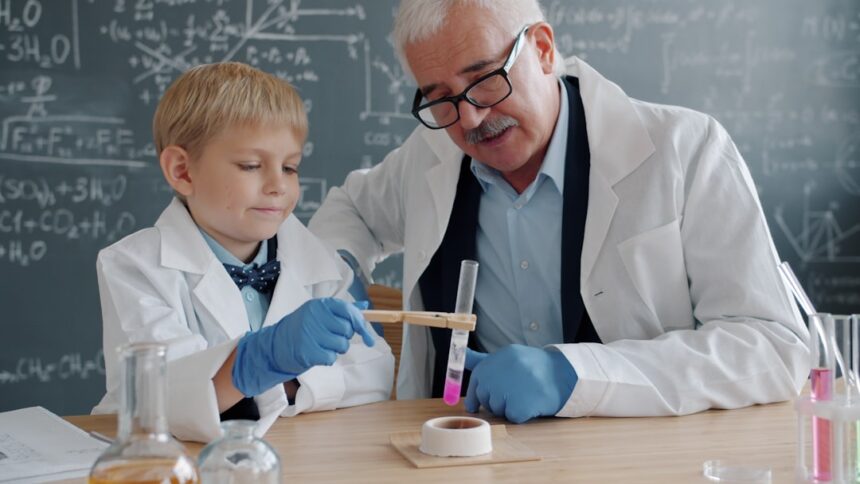The post-World War II era marked a significant turning point in the history of space exploration, particularly in the United States. Among the most pivotal contributors to this burgeoning field were German scientists, whose expertise and innovative ideas played a crucial role in shaping the US space program. Their contributions were not merely technical; they also encompassed a profound shift in the understanding of rocketry and space travel.
As the Cold War intensified, the race for supremacy in space became a matter of national pride and security, prompting the United States to seek out the talents of these brilliant minds who had previously worked under the Nazi regime. The integration of German scientists into the American scientific community was not without controversy. Many of these individuals had been involved in the development of advanced weaponry during the war, raising ethical questions about their pasts.
Nevertheless, their unparalleled knowledge of rocketry and engineering proved indispensable as the United States sought to establish itself as a leader in space exploration. This article delves into the multifaceted contributions of German scientists to the US space program, highlighting key figures, technological advancements, and the lasting legacy of their work.
Key Takeaways
- German scientists played a crucial role in shaping the US space program, contributing their expertise and knowledge to advance space exploration.
- Wernher von Braun, a prominent German scientist, played a pivotal role in shaping the US space program, leading the development of the V-2 rocket and later contributing to the creation of NASA.
- Operation Paperclip facilitated the recruitment of German scientists, including von Braun, to work on the US space program, bringing their expertise and knowledge to the United States.
- The development of the V-2 rocket by German scientists had a significant influence on US space exploration, laying the foundation for future advancements in rocket technology.
- The legacy of German scientists in the US space program endures, with their contributions continuing to impact space exploration and technology, including the Apollo moon landing.
The Role of Wernher von Braun in Shaping the US Space Program
Wernher von Braun emerged as one of the most influential figures in the US space program, often regarded as the father of American rocketry. His journey began in Germany, where he played a pivotal role in developing the V-2 rocket, the world’s first long-range guided ballistic missile. After World War II, von Braun and many of his colleagues were brought to the United States through Operation Paperclip, a secret program designed to harness their expertise for American military and space endeavors.
Once in America, von Braun quickly became a key player at NASA, where he was instrumental in designing and launching the Saturn V rocket, which ultimately took astronauts to the Moon. Von Braun’s vision extended beyond mere rocket design; he was a passionate advocate for space exploration and believed in the potential for human colonization of other planets. His ability to communicate complex scientific concepts to the public helped garner support for NASA’s missions.
Through his leadership and innovative thinking, von Braun not only shaped the technical aspects of space travel but also inspired a generation to dream about humanity’s future among the stars. His legacy is evident in every successful mission that followed, as his foundational work laid the groundwork for future explorations.
Operation Paperclip and the Recruitment of German Scientists

Operation Paperclip was a covert initiative undertaken by the United States government after World War II to recruit German scientists, engineers, and technicians who had been involved in advanced military technology. The program aimed to prevent this valuable knowledge from falling into Soviet hands while simultaneously bolstering American capabilities in various fields, including aerospace. The recruitment process was often shrouded in secrecy, as many of these individuals had questionable pasts due to their affiliations with the Nazi regime.
However, their expertise was deemed too critical to ignore. The operation facilitated the migration of numerous German scientists to America, where they were integrated into various military and civilian projects. This influx of talent significantly accelerated advancements in rocket technology and aeronautics.
The contributions of these scientists were not limited to von Braun; many others played vital roles in developing systems that would eventually lead to manned spaceflight and lunar exploration. The ethical implications of Operation Paperclip continue to be debated, but its impact on American science and technology is undeniable.
The Development of the V-2 Rocket and its Influence on US Space Exploration
| Aspect | Details |
|---|---|
| Development of V-2 Rocket | Developed by Nazi Germany during World War II |
| First Successful Launch | October 3, 1942 |
| Impact on US Space Exploration | Many German rocket scientists, including Wernher von Braun, were brought to the US under Operation Paperclip |
| Founding of NASA | Many of these scientists played key roles in the development of the US space program, leading to the founding of NASA in 1958 |
| Legacy | The V-2 rocket’s technology and the knowledge of its developers significantly influenced the US space exploration efforts during the Cold War and beyond |
The V-2 rocket, developed by Wernher von Braun and his team during World War II, represented a monumental leap in rocket technology. As the first long-range guided ballistic missile, it demonstrated unprecedented capabilities in propulsion and guidance systems. The V-2’s design principles laid the foundation for future rocket development, influencing both military applications and space exploration efforts in the United States.
After the war, American engineers studied captured V-2 rockets extensively, gaining insights that would inform their own designs. The lessons learned from the V-2 program were instrumental in shaping America’s early space endeavors. The technology behind the V-2 was adapted for various projects, including satellite launches and crewed missions.
The transition from military applications to peaceful exploration marked a significant shift in how rocket technology was perceived and utilized. The V-2’s legacy is evident in every subsequent rocket design that followed, as it established benchmarks for performance and reliability that continue to guide modern aerospace engineering.
The Creation of NASA and the Involvement of German Scientists
The establishment of NASA in 1958 marked a new era in American space exploration, driven by a desire to compete with Soviet advancements in space technology. German scientists played an integral role in this transformation, bringing with them a wealth of knowledge and experience that would prove invaluable to NASA’s mission objectives. Wernher von Braun was appointed as director of NASA’s Marshall Space Flight Center, where he oversaw the development of critical technologies that would enable human spaceflight.
The collaboration between German scientists and American engineers fostered an environment of innovation that propelled NASA’s early successes. Projects such as Project Mercury and Project Gemini benefited from their expertise, leading to significant milestones like the first American manned orbital flight and the first crewed missions to test techniques for lunar landing. The synergy between these two groups not only advanced technological capabilities but also cultivated a culture of scientific inquiry that would define NASA’s approach for decades.
The Impact of German Rocket Technology on the Apollo Moon Landing

The Apollo program stands as one of humanity’s most remarkable achievements, culminating in the historic Moon landing on July 20, 1969. Central to this success was the advanced rocket technology developed by German scientists, particularly through their work on the Saturn V rocket. This colossal launch vehicle was designed to carry astronauts beyond Earth’s atmosphere and deliver them safely to the lunar surface.
The Saturn V’s design drew heavily from principles established during the development of earlier rockets like the V-2. The Apollo missions showcased not only technological prowess but also meticulous planning and execution—qualities that were hallmarks of German engineering. The collaboration between American engineers and their German counterparts ensured that every aspect of the mission was thoroughly tested and optimized for safety and performance.
The successful landing on the Moon was not just a triumph for NASA; it represented a culmination of decades of research and development that had been significantly influenced by German scientists’ contributions.
The Legacy of German Scientists in the US Space Program
The legacy of German scientists within the US space program is profound and enduring. Their contributions have shaped not only technological advancements but also inspired generations of scientists and engineers who followed in their footsteps. The principles established by these pioneers continue to inform modern aerospace engineering practices, ensuring that their influence remains felt even decades after their initial contributions.
Moreover, their work has transcended national boundaries, fostering international collaboration in space exploration. The spirit of inquiry and innovation that characterized their efforts has become a cornerstone of NASA’s mission ethos.
The Contributions of Other German Scientists to US Space Exploration
While Wernher von Braun is often recognized as the most prominent figure among German scientists who contributed to US space exploration, many others played crucial roles as well. Figures such as Hermann Oberth, who is considered one of the founding fathers of rocketry, influenced early American rocketry through his writings and theories on space travel. His ideas inspired many engineers who would later work on significant projects within NASA.
Additionally, scientists like Kurt Debus and Ernst Stuhlinger made substantial contributions to various aspects of rocket development and propulsion systems. Debus served as director of NASA’s Kennedy Space Center, overseeing critical launch operations for numerous missions, while Stuhlinger focused on advanced propulsion technologies that would shape future explorations. Collectively, these individuals exemplified a diverse range of expertise that enriched America’s scientific community.
The Influence of German Engineering and Scientific Methodology on US Space Technology
German engineering is renowned for its precision and efficiency, qualities that have significantly influenced American aerospace technology. The methodologies employed by German scientists emphasized rigorous testing, systematic problem-solving, and an unwavering commitment to quality—all principles that have been adopted by NASA and other American aerospace organizations. This emphasis on thoroughness has led to safer and more reliable spacecraft designs.
Moreover, German scientific methodologies have encouraged interdisciplinary collaboration within American research institutions. By integrating principles from various fields—such as physics, materials science, and computer engineering—scientists have been able to develop innovative solutions to complex challenges in space exploration. This collaborative spirit has fostered an environment where creativity thrives, leading to groundbreaking advancements that continue to push the boundaries of what is possible.
The Collaboration between German and American Scientists in Advancing Space Exploration
The collaboration between German and American scientists has been characterized by mutual respect and shared goals in advancing space exploration. This partnership has facilitated knowledge transfer across borders, allowing both groups to learn from each other’s experiences and expertise. Joint projects have often resulted in innovative solutions that might not have been possible through isolated efforts.
One notable example is the development of reusable spacecraft technologies, which have revolutionized how missions are conducted in space. By combining insights from both German engineering practices and American ingenuity, teams have created systems that enhance efficiency while reducing costs associated with space travel. This collaborative approach has not only accelerated technological advancements but has also fostered a sense of camaraderie among scientists dedicated to exploring new frontiers.
German Scientists’ Enduring Impact on the US Space Program
In conclusion, the contributions of German scientists to the US space program are both profound and far-reaching. Their expertise has shaped every aspect of rocketry and space exploration—from initial designs to groundbreaking missions like Apollo 11—leaving an indelible mark on history. While ethical questions surrounding their recruitment remain relevant today, it is essential to recognize their pivotal role in advancing human understanding of space.
As humanity stands on the brink of new explorations beyond Earth—venturing toward Mars and potentially beyond—the legacy left by these pioneering scientists serves as a guiding light for future generations. Their commitment to innovation, collaboration, and scientific inquiry continues to inspire those who dare to dream about what lies beyond our planet.
German scientists played a pivotal role in the development of the U.S. space program, particularly during the post-World War II era. Many of these scientists were brought to the United States under Operation Paperclip, a secret program aimed at harnessing their expertise for American technological advancement. A related article that delves into the contributions of these scientists and their impact on the space race can be found on the War Room website. For more detailed insights, you can read the article by visiting this link.
WATCH THIS! 🪖How Stolen Nazis Built Cold War Power
FAQs
What is the role of German scientists in the US space program?
German scientists played a significant role in the US space program, particularly after World War II. Many German scientists, including Wernher von Braun, were brought to the United States as part of Operation Paperclip to work on the development of rockets and missiles for the US military and later for NASA.
Which German scientists were involved in the US space program?
Some of the notable German scientists involved in the US space program include Wernher von Braun, who is often referred to as the “father of the American space program,” as well as other members of his team from the German rocket program, such as Ernst Stuhlinger and Arthur Rudolph.
What contributions did German scientists make to the US space program?
German scientists made significant contributions to the US space program, including the development of the Saturn V rocket, which was used to launch the Apollo missions to the moon. They also played a key role in the development of the Redstone, Jupiter, and Pershing missiles, as well as early space exploration efforts.
How did the involvement of German scientists impact the US space program?
The involvement of German scientists had a profound impact on the US space program, accelerating the development of rocket technology and contributing to the success of key missions, such as the Apollo moon landings. Their expertise and experience from the German rocket program were instrumental in advancing the capabilities of the US space program.
What is the legacy of German scientists in the US space program?
The legacy of German scientists in the US space program is significant, as their contributions helped establish the United States as a leader in space exploration and technology. Their work laid the foundation for future advancements in space travel and continues to influence the development of space exploration initiatives.




